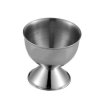Mechmike
Well-Known Member
 How about using these? http://www.ebay.com/itm/281156277541?_trksid=p2055119.m1438.l2649&ssPageName=STRK:MEBIDX:IT
How about using these? http://www.ebay.com/itm/281156277541?_trksid=p2055119.m1438.l2649&ssPageName=STRK:MEBIDX:ITEgg cups kinda fit in with the fried egg thing!
Last edited:
 How about using these? http://www.ebay.com/itm/281156277541?_trksid=p2055119.m1438.l2649&ssPageName=STRK:MEBIDX:IT
How about using these? http://www.ebay.com/itm/281156277541?_trksid=p2055119.m1438.l2649&ssPageName=STRK:MEBIDX:IT











 reflector x,y ( " z" ) values Set : |Cartesian profile |
reflector x,y ( " z" ) values Set : |Cartesian profile |





I've tried a hypothetical conical shaped -reflector ...
Like the ones Supra is using ...
Much better ,I've to admit ...
The reflector "profile " ...
View attachment 3316746
The Shape ,takes that "profile " and "spins" it a full circle..
There's your reflector ...
So this one has these dimensions in 3D :
-32 mm diameter of -base
-70 mm diameter of ' shield lips ' (aperture )
-30 mm height .
View attachment 3316751
Place VERO / CXA series cob product IES file ..For light source data
View attachment 3316752
Edit and import
View attachment 3316753
In the next tab ,place manually one -by-one (no copy/paste allowed )View attachment 3316766 reflector x,y ( " z" ) values Set : |Cartesian profile |
View attachment 3316768
And hit calculate..
Very easy to learn software ,plenty of (hidden somewhat ) settings ..
View attachment 3316747
Working space set at 1m height ..
View attachment 3316749
Follow these steps to extract an new IES file of the reflector ..
View attachment 3316757
Download freeware "IES viewer " and view the render ...
View attachment 3316758


Info bites :
An useful calculator :
http://store.marinebeam.com/beam-angle.html
Field angle : The angle of a light cone where the irradiation / illuminace is 10% of maximum .
Interesting post, but this statement is not true. It's 50% of maximum value, not 50% of (total) radiant power....
The Vero29 has a " Full Width Half Maximum " angle of 120 °
So ,50% of radiant power is " within" a cone of emitted light ,with a (full ) cone angle of 120°.
The rest 50% of radiant power is emitted from 120° to 180° ,360° around the light source (the COB in our case ) .
...



Interesting post, but this statement is not true. It's 50% of maximum value, not 50% of (total) radiant power.
For Vero29, about 80-90% of radiant power is within 120° cone.






